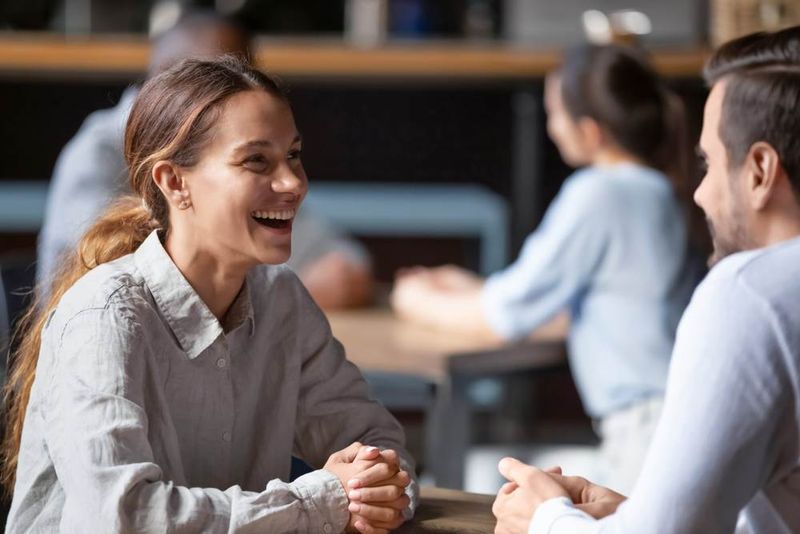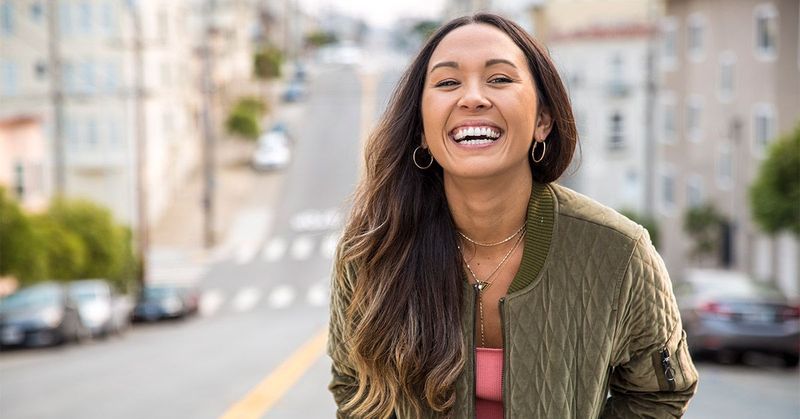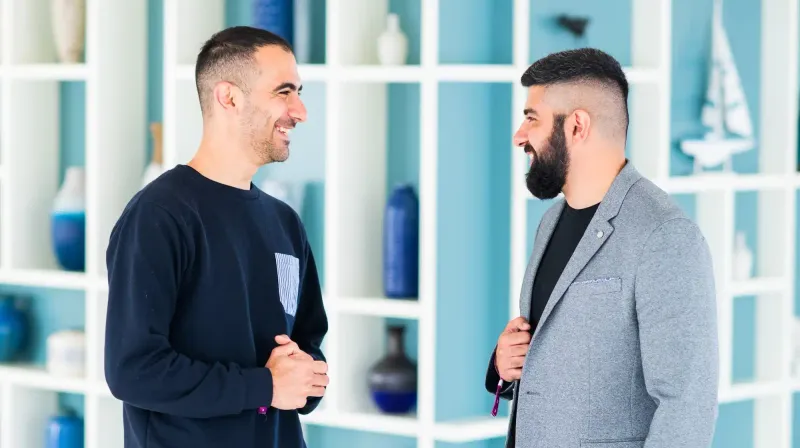In the silent realm of body language, our gestures and movements speak volumes. Nonverbal communication can significantly impact how others perceive us, often establishing trust without the need for words. Whether you’re meeting someone new, engaging in a business discussion, or simply interacting with friends and family, mastering the art of conveying trust through body language can transform your relationships. This blog post explores nine powerful nonverbal signals that can instantly inspire trust and connection. From the way you position your body to the subtle nuances of your gestures, learn how to communicate sincerity and openness through these simple yet effective techniques.
1. Maintain Open Posture

Standing with your arms and legs uncrossed is like opening a door to conversation. This gesture signals receptiveness and honesty, creating a warm environment for dialogue. It tells the other person that you are open to what they have to say and have nothing to hide.
In professional settings, maintaining an open posture can foster collaboration and trust. It’s a silent agreement that you’re on the same team.
Did you know? Studies suggest that people with open postures are often perceived as more competent and likeable.
2. Establish Eye Contact

Eye contact, often called the window to the soul, can convey attentiveness and respect. Maintaining eye contact about 60-70% of the time shows genuine interest in the conversation. It’s not just about looking; it’s about seeing and understanding.
In many cultures, eye contact is a sign of confidence and sincerity. However, cultural differences exist, and it’s essential to be aware of them.
Fun fact: Eye contact has been linked to increasing mutual liking between strangers, making it a powerful tool in forming new connections.
3. Use a Genuine Smile

A sincere smile can light up a room. A Duchenne smile, where your eyes crinkle, conveys authenticity and warmth. This type of smile is contagious and can make others feel at ease.
In social interactions, a genuine smile can break down barriers and encourage openness. It’s a universal gesture of friendliness that transcends language.
Interesting tidbit: Research has shown that humans can differentiate between fake and genuine smiles, often unconsciously trusting the latter more.
4. Mirror the Other Person’s Behavior

Mirroring is like creating a dance of understanding. By subtly mimicking the gestures, expressions, or posture of the person you’re interacting with, rapport is built naturally. This technique can bridge gaps in conversations and foster mutual understanding.
In psychological studies, mirroring has been shown to create empathy and camaraderie. It signals that you are on the same wavelength, making interactions smoother.
Did you know? Mirroring is often used in negotiations to build trust and ease tensions between parties.
5. Nod While Listening

A simple nod can speak louder than words. Nodding your head during a conversation indicates active listening and agreement. It shows that you value the speaker and their insights.
This gesture reassures the speaker, encouraging them to open up further. It’s a nonverbal confirmation that you’re engaged and interested.
Historical note: Nodding as a gesture of agreement is believed to have origins in the early human communication process, symbolizing understanding without words.
6. Lean In Slightly

Leaning in slightly during a conversation is a subtle yet powerful signal of engagement. It shows genuine interest and attentiveness, making the other person feel valued.
In close relationships, this gesture reinforces connection and intimacy. It’s a nonverbal cue that you are fully present in the moment.
Curious fact: Studies have shown that people perceive those who lean in during conversations as more empathic and understanding.
7. Maintain an Upright Posture

An upright posture projects confidence and comfort, making you appear more trustworthy. It’s a physical manifestation of self-assuredness and can influence how others perceive your competence.
In professional environments, standing or sitting up straight can command attention and respect. It’s a foundational aspect of authoritative body language.
Did you know? Posture influences not only how others see you but also how you feel about yourself, often affecting mood and energy levels.
8. Use Open Hand Gestures

Displaying open hands or palms is like saying, “I have nothing to hide.” This gesture conveys honesty and openness, encouraging trust from your audience.
In public speaking, open hand gestures can enhance credibility and engage listeners. It’s a nonverbal cue that promotes transparency.
Historical tidbit: In ancient times, open hands were used to show that one was unarmed, fostering trust in peace talks.
9. Keep Your Hands Visible

Keeping your hands visible during interactions is a straightforward yet effective way to build trust. Hidden hands can subconsciously signal deceit or concealment, while visible hands promote openness.
In educational settings, teachers often use visible hand gestures to enhance understanding and foster a trusting environment.
Fun fact: Research indicates that people feel more comfortable and are more likely to believe messages when they can see the speaker’s hands.

Well, hello there!
My name is Jennifer. Besides being an orthodontist, I am a mother to 3 playful boys. In this motherhood journey, I can say I will never know everything. That’s why I always strive to read a lot, and that’s why I started writing about all the smithereens I came across so that you can have everything in one place! Enjoy and stay positive; you’ve got this!

